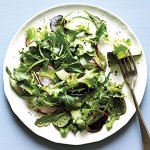Macronutrients
Modern man lives in a polluted environment, leads a sedentary lifestyle, so he needs much more essential nutrients to maintain their optimal level in the body and to prevent the accumulation of toxic substances that, unfortunately, are present in certain, allowed quantities during food production, but also occur as a result of its processing and act as antinutrients, i.e. they “compete” with the essential nutrients after we ingest them in the body.
What are Macronutrients
The macronutrients are carbohydrates, proteins and fats. These three macronutrients supply the body with the necessary energy and building blocks necessary to carry out all the biochemical processes in our body.
Carbohydrates provide energy for the metabolic processes in the body. They can be simple and complex.
Simple carbohydrates, mono and disaccharides are also called sugars, which include glucose, fructose, maltose, ribose, sucrose, lactose, maltose and other sugars from fruits, vegetables, milk, grains, sugar cane, turnips and other sources. Their digestion is short and they quickly are absorbed into the intestines and enter the bloodstream.
Complex carbohydrates include starch and other non-digestible carbohydrates (such as cellulose, digestive fibers, etc.). In the process of digestion, which lasts longer in the intestine they break down to monosaccharides, or molecules of glucose.
Proteins are the basic building blocks needed for the synthesis of vital cellular components (for the very structure of the cell, organelles, enzymes, hormones, transport molecules, etc.). Proteins can be of plant and animal origin and in the digestion process they break down to amino acids that the body uses to synthesize the specific proteins needed for the construction and function of our tissues and organs. It is important to point out that certain, so-called essential amino acids cannot be created by humans, and they can be entered into the body only through the diet. All proteins of animal origin are complete, meaning they contain all essential amino acids, and eggs, meat, fish and milk are among the best protein sources.
Fats are macronutrients that have energetic as well as a building and functional role in the body. They also include a wide range of molecules such as triglycerides, cholesterol, phospholipids, and other fat molecules that can have different functions in the body as a building component of each cell membrane, molecules that produce vital hormones and vitamin D, can be used to obtain cellular energy, etc.
All the fats we enter through food, fats of plant or animal origin are assembled or synthesized from fatty acid molecules. The human body is capable of synthesizing certain fatty acids that have a physiological function, but some so-called essential fatty acids such as Omega 3, 6 or 9 fatty acids can be obtained only through nutrition.
Macronutrients List
No matter what kind of diet you are using, proteins are unavoidable macronutrients if you want to maintain your health, control your appetite and provide food for the muscle system. In order to make it easier to achieve the desired daily intake of these macronutrients, a list of 15 foods with high protein content follows.
-
Buckwheat
Protein content: 9g per 100 grams
Buckwheat is an excellent source of protein, but also is good source of fiber and minerals. Its additional advantage is the low cost and quick and easy preparation.
-
Bean
Protein content: 20g in 1 cup
Beans is also inexpensive, but very healthy food. It is full of proteins and fiber – in a cup of up to 13 grams. It is also a source of calcium, iron, magnesium, and vitamin B6.
3.Peas
Protein content: 7g per cup
This leguminous vegetables should be included as often as possible in your diet. In addition to the protein, it also contains a high amount of vitamin C, vitamin A, vitamin B6, magnesium, iron and fiber, which can help you cope with your appetite.
-
Broccoli
Protein content: 3g in 100 grams
Broccoli are rich in many vitamins such as A, C, K, B, as well as minerals – iron, calcium, potassium, magnesium and zinc. In addition of increasing your daily protein intake, they will also help in boosting your immunity and maintain the cardiovascular and bone system. Another positive side of broccoli is low calorie value – 100 grams of broccoli contains only 28 calories.
-
Chicken breasts
Protein content: 24g in a piece of 85 grams
Chicken breasts are for good reason the basis of the nutrition of many athletes who are concerned with fitness and bodybuilding. They are rich in protein and have a lower amount of fat than other types of meat. You can combine them with many different types of vegetables and spices to ensure the variety of flavors in your meals.
-
Baked turkey breasts
Protein content: 18g in a piece of 85 grams
The turkey breasts are an almost pure protein for building muscle mass due to extremely low fat content. Apart from being healthy, the great advantage of this meat is its excellent taste.
-
Tuna
Protein content: 25g in 85 grams
The tuna contains high quality and light digestive protein. It also contains a large amount of B vitamins and selenium, which is an excellent antioxidant
-
Sardines
Protein content: 21 grams in 85 grams
Canned sardines can be a good meal for increasing daily intake of proteins, but also they are good source of omega 3 fatty acids and vitamin D. You can combine them with boiled potatoes or cauliflower to soften the strong flavor.
-
Eggs
Protein content: 6g in 1 large egg
Eggs are excellent food for muscles because they are filled with branched chain amino acids (BCAA). They are cheap, you can find them at any time and prepare them in different ways.
-
Peanut butter
Protein content: 8gr in 2 tablespoons
A healthy supplement that you can combine with a variety of foods and is full of proteins. Take care only of the content of sugars. It is best to ask for natural butter made exclusively from peanuts or to prepare it yourself.
-
Cottage cheese
Protein content: 14g in ½ cup
Cottage cheese is a great choice for a dinner meal. It contains a large amount of casein, a milk protein that is much more slowly digested than the whey protein, giving it 2 advantages of a dinner – it feeds muscles all night and prevents the occurrence of “hunger attacks” late in the evening.
-
Sour cream
Protein content: 23 grams in 200 grams
Sour cream is known for high protein content, has 2 times more proteins than other dairy products, but it is also rich in calcium and probiotic bacteria that are great for maintaining gut health. When choosing sour cream, you should only look at the percentage of fat.
-
A mixture of nuts
Protein content: 6g in 50 grams
If you want to add protein and healthy fats with excellent taste in your diet, a mixture of peanuts, Indian walnuts and almonds is a great choice for you. Just try to eat them unsalted and pay attention to the amount.
-
Wheat flakes
Protein content: 6g in 30 grams
Wheat flakes are rich in nutrients and plant proteins. You can use them as an additive in oatmeal, pancakes and protein shakes.
-
Quinoa
Protein content: 8g in 1 cup
Quinoa is full of essential amino acids, making it a complete protein that helps build muscle mass. You can combine it with different types of foods.
Macro and Micronutrients
The food we consume provides nutritional groups that are part of these two equally important categories. Macronutrients are well-known three groups of nutrients that have an energetic, but also and building role in the body: carbohydrates, proteins and fats.
Micronutrients, technically, are trace of elements in the food we consume, which is, vitamins, minerals, antioxidants … It is scientifically proven that these elements are essential because they provide the normal function of the organism, protect it from diseases, provide growth and development, and slow down the aging process. Each of the meals or the foods we consume is the source of some or all of the macronutrients, but when it comes to micronutrients, nutritionists point out the “whole” groceries or food coming from nature, unprocessed and unprocessed as the best source of these essential elements in traces, which are often nonresistant to thermal and industrial processing.
The rapid pace of modern life limits man to care about nutrition, and in such circumstances dietary supplements are a solution for consuming the essential ingredients in the body.
Macronutrient ratio for weight loss female
Losing weight depends on the intake and consumption of calories. The old rule for weight loss says – you have to spend more calories comparing to what you intake. But it’s an old rule, and we already know that all calories are not the same. A piece of white bread can have even fewer calories than a piece of black bread, but having in mind that black bread contains fibers that are worthy of good metabolism, such bread is a better choice for losing weight.
The composition and the quantity of various macronutrients determine the stability of blood sugar, which dictates the feeling of hunger and fatigue. A stable blood sugar level can help you avoid fast foods and get over it.
According to Amy Goodson a registered dietitian and consultant “a certain selection of macronutrients can help you to have a longer sense of satiety and thus will lead you to intake fewer calories”.
No one claims that calories should not to be heeded, but…
For calories, or energy value, everyone should take care, but our body is not just a calorimetric bomb, a composition that only consumes energy, but more it is a complex biochemical composition. It’s more important to pay attention to the quality and combination of groceries than to worry about the intake of calories. When we know the nutritional values of the meal or groceries, we will have a feeling for their energy value. The quality of the nutrition is important, does not reduce the importance of the imported quantities of certain foods and the volume of the meal. The nutritional composition of the foods is important, but also the combination of the same in a meal.
What is the best measure of macronutrients for weight loss?
It depends on the age, size and level of activity. “Those who are active require a different amount of carbohydrates,” says Goodson. But the general recommendations are: If you practice an hour or a bit less daily: 30% protein, 30% fat, 40% carbohydrates. If you practice one to two hours a day: 30% protein, 25% fat, 45 carbohydrates. If you exercise more than two hours a day: you should consult a nutritionist.
What is the easiest way to count macronutrients?
Now that you know how much you should enter, you need to follow three basic steps: Discover your caloric needs – do not forget the nutritional needs that depend on your age, the height, the level of activity, and the results you want to achieve.















